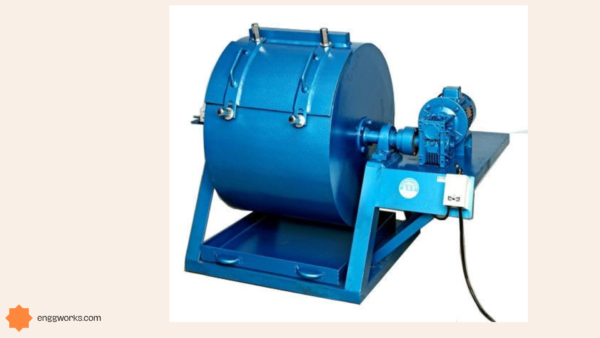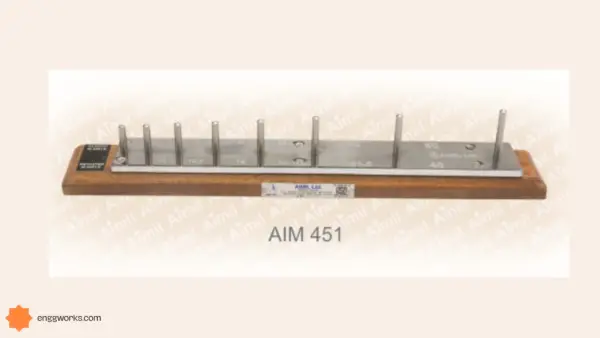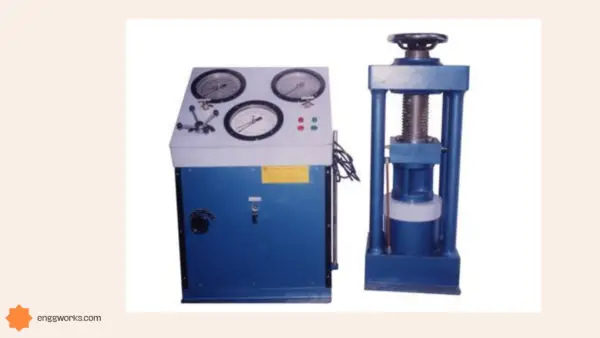Air Meters for concrete measure the air content of fresh concrete in accordance with ASTM and AASHTO standards test methods.
Gilson offers a selection of air meters for concrete for use in testing fresh concrete specimens or concrete mixes, lightweight aggregate concrete, or other lightweight mixes.
Measuring the air content of fresh concrete is a critical quality control step before placement to ensure durable, long-lasting concrete.
Using an air meters for concrete greatly simplifies determining the air percentage quickly and accurately.
This allows concrete producers and contractors to efficiently monitor air levels and make adjustments as needed.
One important piece of equipment used for measuring air content is an air meter.
Air meters for concrete work by determining air percentage through the pressure method, which calculates air based on how much air is displaced from a known volume and pressure of concrete.
Choosing an accurate and reliable air meter is essential to properly test and place durable concrete.
Key features to consider include ease of use, speed, repeatability, and certification.
Air meters for concrete allow operators to quickly determine if the air content falls within the specified range for their mix design.
They must be properly calibrated to provide consistent, dependable readings.
Using a high-quality, modern air meter that utilizes the latest technology will reduce human error and ensure air content readings fall within the ASTM C231 standard.
Knowing all about air content and choosing the right air meter leads to better concrete quality control and optimal concrete performance.
Measuring Air Content using air meters for concrete
Air entrainment is intentionally adding microscopic air bubbles during mixing to improve the freeze-thaw resistance and workability of concrete.
This causes what’s known as “air content” – the total volume percentage of these air pockets within the concrete mixture.
The specified air content range is based on the exposure conditions the finished concrete will face along with the max aggregate size and any chemical admixtures used.
Testing via air meter ensures each batch falls within the target air parameters before placing.
Air meters for concrete testing is crucial for quality assurance given how impactful air content is on concrete’s long-term durability and strength.
different Air Meters for Concrete test
Air meters determine air percentage by calculating the volume of air displaced from a known volume of concrete at a calibrated pressure in accordance with Boyle’s Law.
This is referred to as the “pressure method” defined in ASTM C231 Standard Test Method.
There are two main types:
Volumetric Air Meters
These measure displaced air directly in percent volume of the concrete sample.
They’re popular for field use given their speed, ease of operation, and ability to account for variable aggregate quantities or chemical admixtures.

Gravimetric Air Indicators
These calculate air indirectly by first determining the density then inputting the number into a calibration chart to determine air content as a percent by concrete volume.

They are typically used in the lab.
Air meters only gauge total air content—they do not distinguish between purposefully entrained air bubbles and unintended entrapped air pockets that can arise during placement.
This is an important limitation to understand.
key things to look for when selecting an air meters for concrete testing
Accuracy – The air meter should provide readings within the tolerances specified in ASTM C231 for the pressure method. Seek out independently verified accuracy data.
Precision – It should give highly repeatable readings in multiple tests on the same sample. High precision ensures reliability.
Ease of Use – Air meters should be simple to set up, operate, read, and clean, with clear controls and displays to minimize human error.
Durability – Meters must withstand transport, frequent use, wet conditions and drops onsite. Look for sturdy casing and protected electronics.
Standards Compliance – The manufacturer should indicate compliance with ASTM C231, ASTM C173 and other relevant air monitoring standards for concrete.
Digital Display – Easy-to-read digital screens clearly show air percentage without needing to check calibration charts manually.
Automated Features – Programmable meters that calculate temperature corrections automatically reduce workload.
Certifications – Independent certification and annual calibrated certificates confirm quality assurance and meter capabilities.
Manufacturer Reputation – Established companies may cost more but provide better technical support, warranties and maintenance services.
Testing Adaptability – Volumetric meters allow testing concrete with varied proportions or aggregate sizes.
Overall, investing in an accurate, durable, easy-to-use air meter from a reputable company following industry standards helps concrete producers and contractors improve quality control during this critical step in the concrete construction process.
Key Standards and Test Methods fer air meter
It’s critical air content testing follow recognized industry standards performed by qualified technicians:
ASTM C231 Standard Test Method for Air Content of Freshly Mixed Concrete by the Pressure Method
ASTM C173 Standard Test Method for Air Content of Freshly Mixed Concrete by the Volumetric Method
ASTM C138 Standard Test Method for Density of Concrete
These contain requirements on apparatus calibration, sample handling, test procedure, calculation and reporting to produce quality assured air readings. Familiarity with these methods is imperative.
Choosing Reliable Air Meters
With air testing so vital, the quality and capability of your air meter directly impacts concrete quality outcomes. Key features to look for include:
• Speed and accuracy meeting ASTM C231 requirements
• Digital display providing direct percent readings
• Designed to minimize operator influence and human error
• Steel construction for site and lab durability
• Up-to-date calibration certifications
• Battery or electric powered for portability
• Volumetric design for adaptability and ease of use
Top manufacturers include Humboldt Mfg, Plasti-Fab, Teraoka, Cooper Testing, Grant, Air Supply & Machine Co. While investing in a reliable volumetric or gravimetric unit may cost more initially, it’s worth it for precise, consistent air readings you can trust.
Putting Your Air Meter into Action
Once you have your air meter selected, proper use in the field and lab is necessary for optimal concrete air monitoring:
• Establish an air monitoring plan and testing frequency in line with regulations
• Thoroughly read and follow the manufacturer operating instructions
• Frequently check calibration and confirm it’s within tolerance
• Only allow qualified technicians to perform air meter testing
• Ensure representative concrete samples meet size, handling and consistency requirements
• Carefully measure the temperature of the concrete for applicable temperature corrections during calculation
• Discard samples after testing to avoid duplication or mistakes
Accurately tracking air over time provides vital data on concrete quality and if adjustments are necessary to maintain air within specifications. This protects long-term concrete integrity.
Continually monitor operation and calibration of your air meters and other testing apparatus per ASTM standards to produce quality assured results you can rely on for making crucial decisions about concrete placement.
conclusion
Monitoring air content via specialized pressure-based air meters removes guesswork and human subjectivity from this vital concrete quality control step.
Air meter testing provides definitive data to help contractors and producers optimize mixes and meet air content targets for durable, high-performing concrete in all types of projects and climate conditions.
Stay up-to-date on the latest industry standards and manufacturer recommended guidelines for maintaining and correctly operating air meters.
Following ASTM air test procedures performed by skilled technicians allows for fast, precise readings you can count on.
Investing in reliable air meters suitable for your specific needs leads to consistent air measurement, enhanced concrete outcomes and fewer issues arising down the line.







